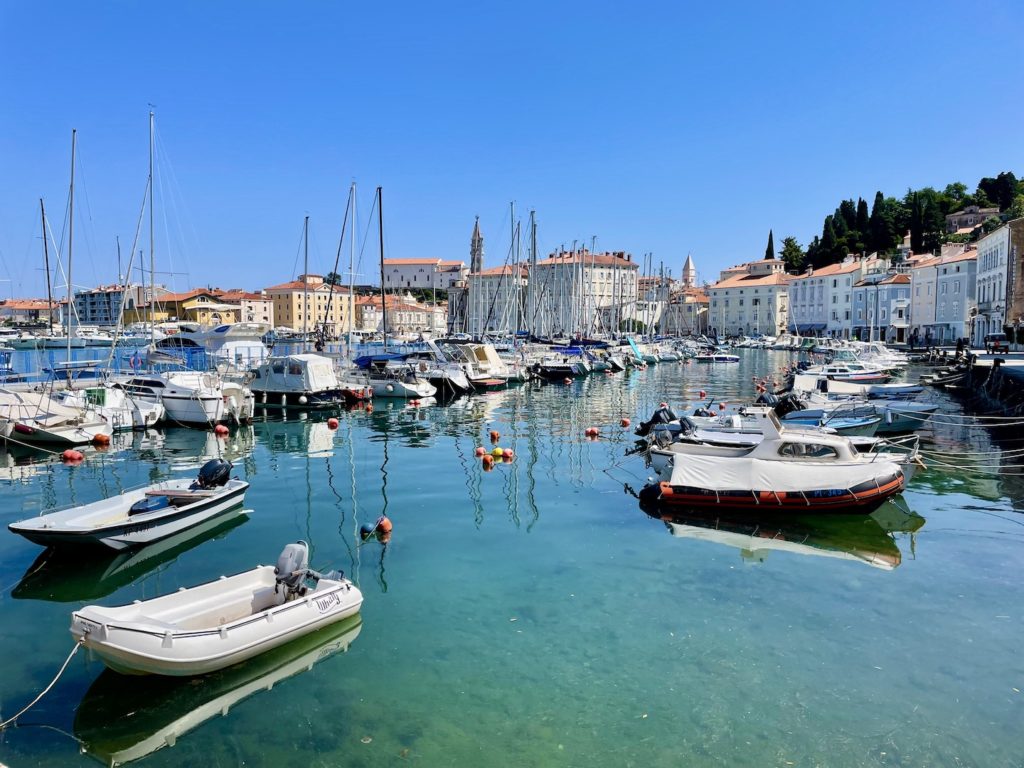The island of Rhodes sits in the southeastern portion of Greece — northeast of Crete and just 11 miles west of Turkey. This island beckons travelers who have come to appreciate its history, natural beauty, and beaches. It has become a popular destination for travelers — and with good reason. You can explore the ruins, lounge on the beaches, hike, enjoy the nightlife, or just hang out in one of its towns. It has a different feel than crazy busy Santorini. Don’t get me wrong, cruise ships do make a stop here on their island voyages, but this place is not overrun with tourists like Santorini can be even in the off-season.
Our Greece Itinerary
With traveling, there are always trade-offs given the time allotted for the visit. My husband and I began in Athens and visited its highlights over three days; then we began our island hopping: Crete, Rhodes, and Santorini.
If a trip to this beautiful country is in your future, check out trip planning ideas and tips for a two-week trip to Greece, driving tips for Greece along with the best of Santorini and Crete.
Overview of Rhodes
Like Crete and other Greek islands, Rhodes has a storied past. It’s sometimes referred to as The Island of the Knights because the Knights of St. John (a medieval Catholic military order) ruled this island for much of the 14th and 15th centuries. From noble Roman Catholic families, the knights were tasked with the care and medical treatment of Christian pilgrims.
Stepping further back in history, this island was home to the Minoans as early as the 16th century BC and has been conquered and occupied by a number of groups and cultures including the Persians, Romans, Turks, Germans, Italians, and British. Rhodes became united with Greece in 1947. Today its economy is driven largely by tourism.
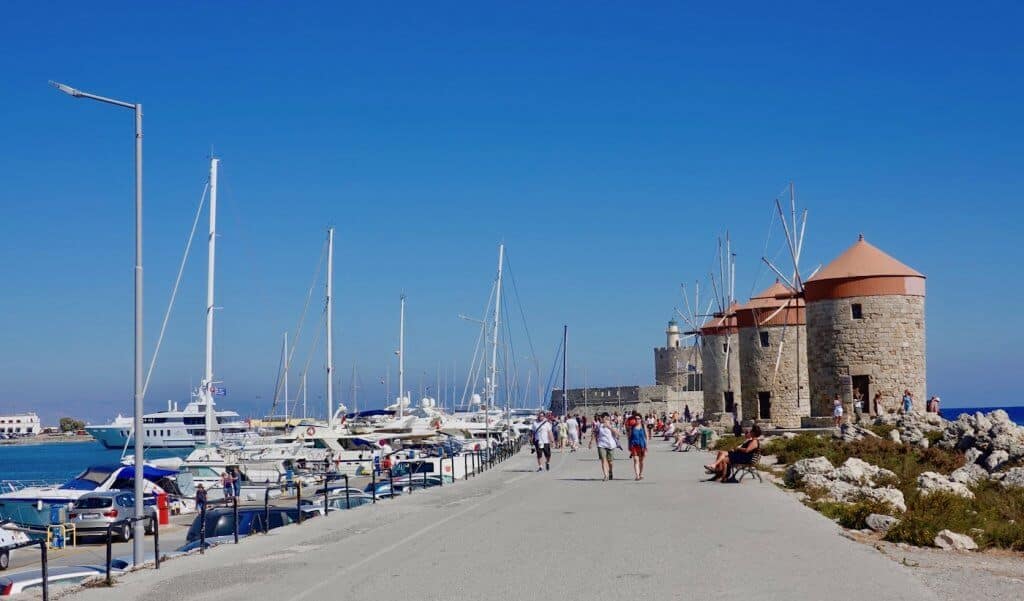
This small island — about 50 miles long and 24 miles wide — has differing views when traveling east to west or vice versa. The western coast of the island is much greener than the east coast. It gets more rain, its soil is more fertile, and there are lots of trees. As you cross the mountains in the middle of the island, you notice a marked change as the landscape becomes more barren. There are lots of things to see and enjoy wherever you are on the island, though.
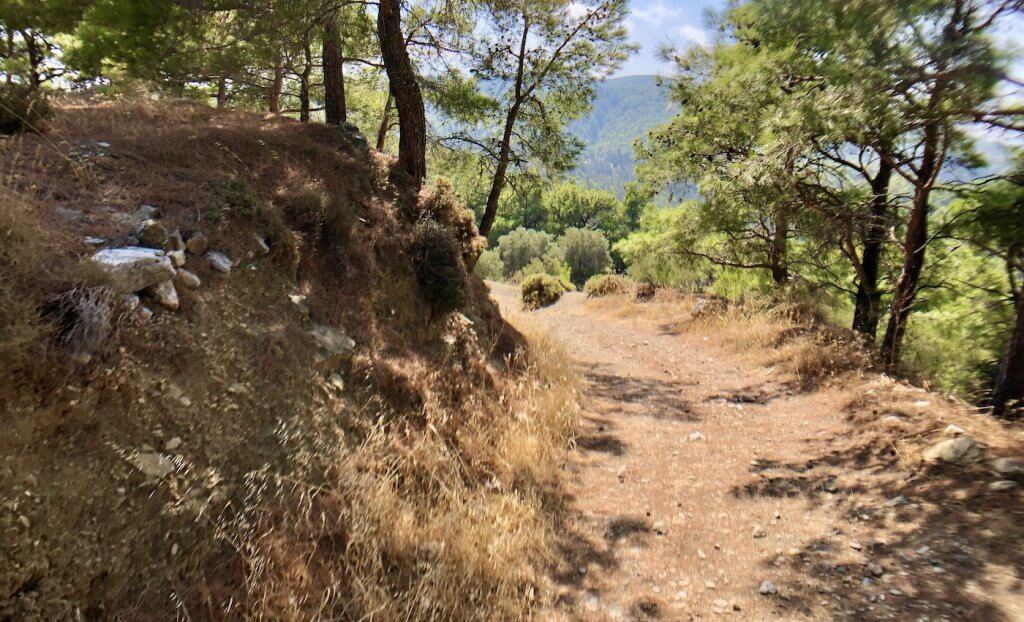
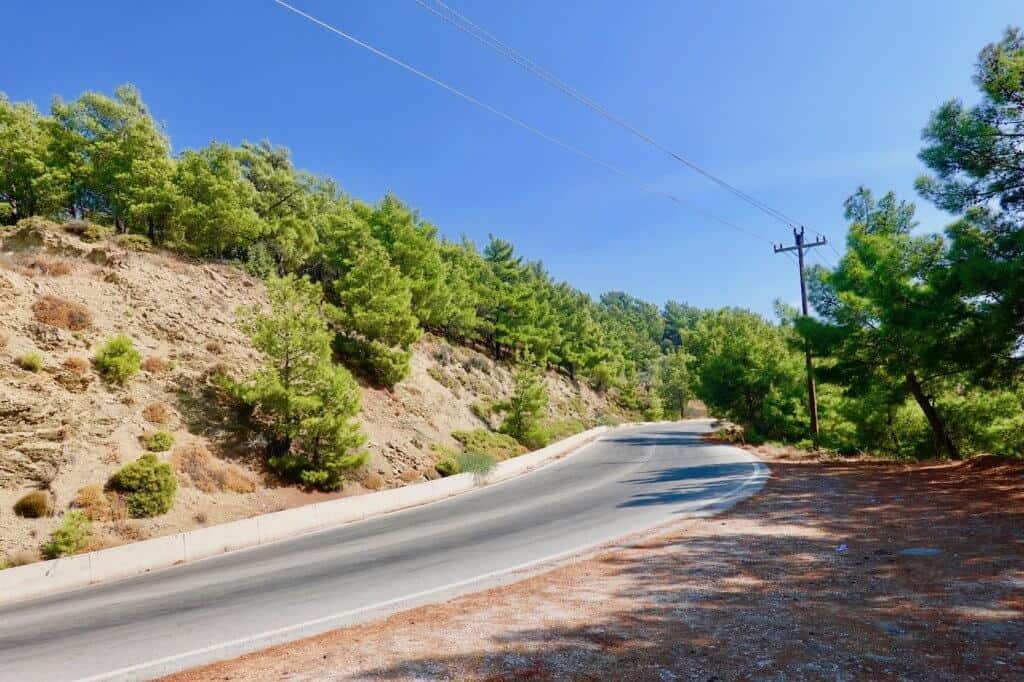
The two main landing spots for most tourists are Old Town Rhodes and Lindos. We chose Old Town Rhodes for our “home” while visiting Rhodes, but we did rent a car to explore the island — and visit Lindos.
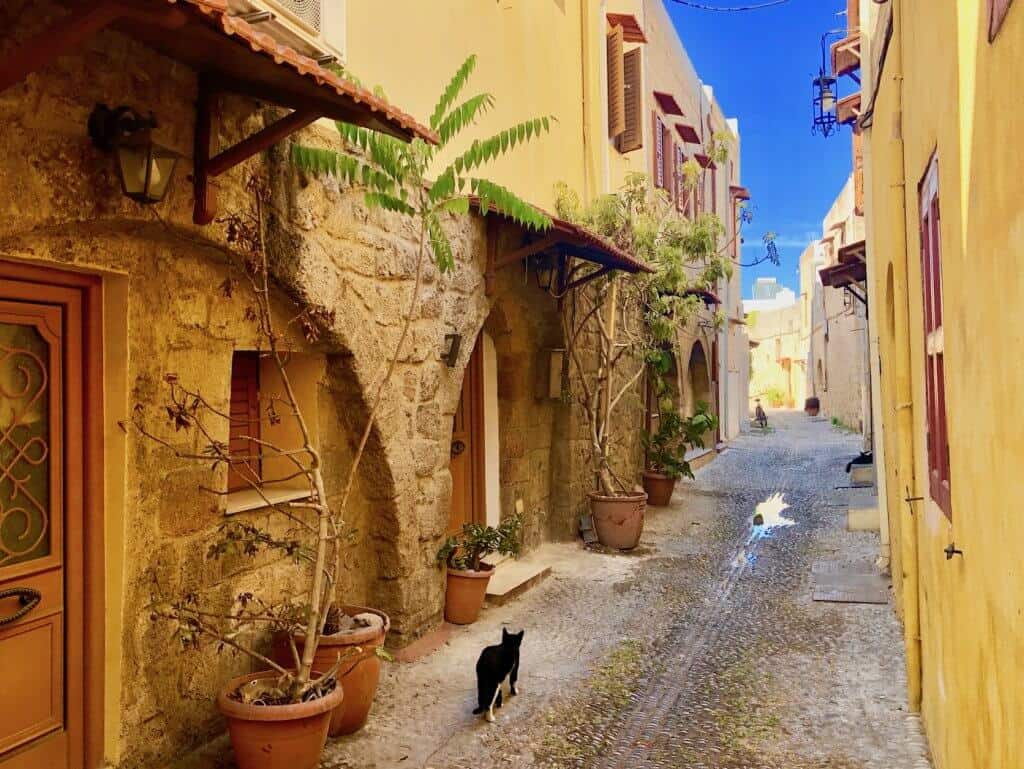
TOP 8 SIGHTS ON RHODES
In roughly north-to-south order, the top places to visit on Rhodes are below.
Old Town Rhodes is a charming walled town that was occupied by many and heavily fortified by the Knights of St. John. There is plenty to keep you busy for a few days here.
Archeological Museum (Old Town Rhodes)
Housed in the New Hospital of the Knights, a hospital built by the Knights of St. John in 1481, the Archeological Museum houses a large collection of artifacts from Rhodes’ early history. You’ll see the rooms that were actually used as a hospital. The hospital’s great hall is where the sickbeds were lined up; alcoves were where patients were isolated from one another.
The museum houses magnificent sculptures including the marble Aphrodite of Rhodes from the 1st century BC and the head of Helios, the sun god, from the 2nd century BC.
At the cemetery in the museum, we learned that the cylindrical gravestones were those of males; the top of the gravestone often indicated the profession of the deceased because of the turban, cap, or hat that adorned it. The flat gravestones were for women; these often had flowers, and the number of flowers represented the number of children the deceased had. There were also sarcophagi with small holes near the top so that a person’s soul could be released after death.
Ancient roads are on display in the museum, too. You can walk on a plexiglass bridge of sorts and peer down to the original paved road just about four feet below you.
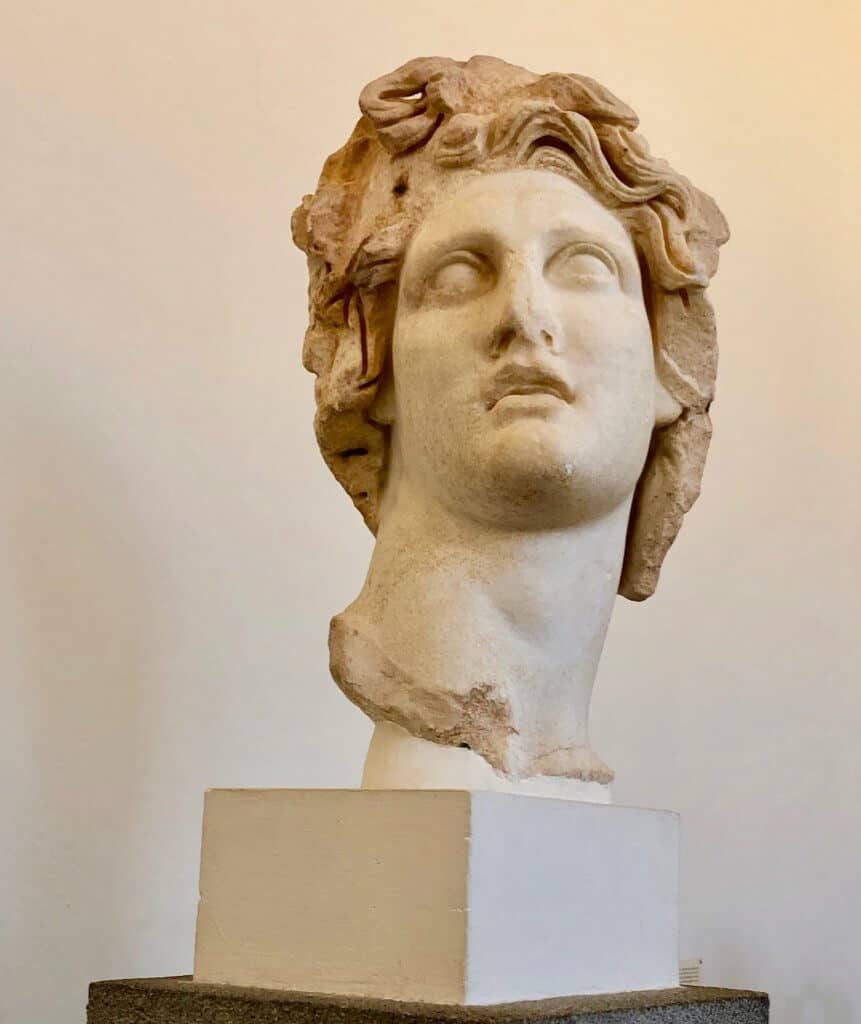
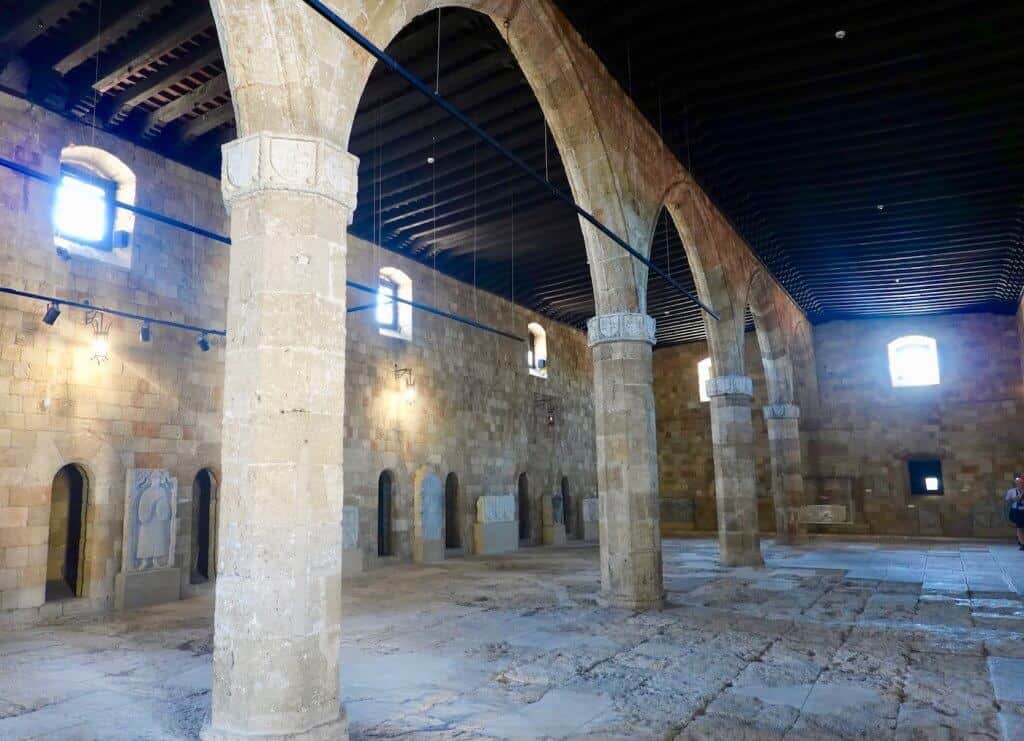
Palace of the Grand Masters (Old Town Rhodes)
Built in the 14th century, the Palace of the Grand Masters was a fortress that was the center of the Knights of St. John administration and a place of refuge when the population was threatened by invading conquerors. This was also where the Grand Master of the Knights of St. John resided and visitors were welcomed. After an explosion in the mid-19th century, it was restored by the Italians who ruled in the 1930s. Although the restoration work was not always historically accurate, the palace has a dominating presence in the city and is worthy of a visit.
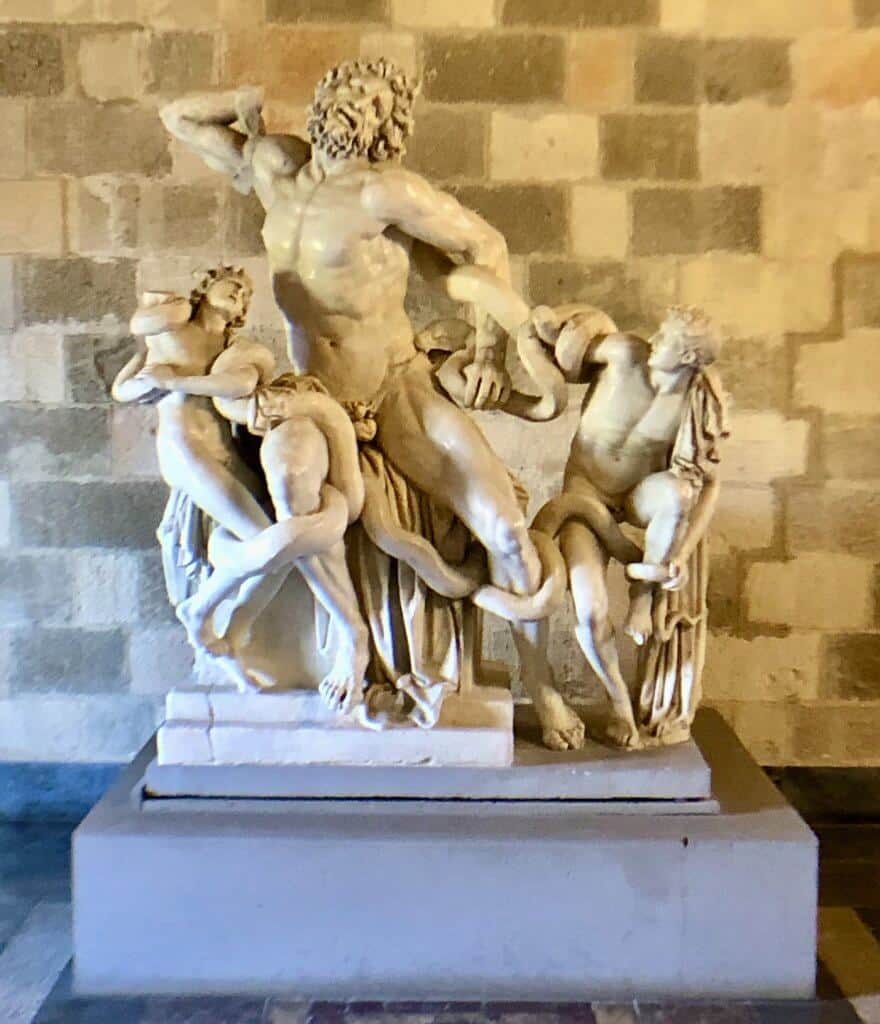
The Street of the Knights (Old Town Rhodes)
This paved path connects the harbor with the Palace of the Grand Masters. It’s lined with lodges for knights from different lands. There are crests atop the exterior doors that identify the nationality of the knights (i.e., England, France, Germany, Italy, Spain). It was in these lodges that administration was housed for each group. Each nationality was responsible for a specific mission. For example, the Italian knights were responsible for their navy, and the English were responsible for their cavalry. Today, some of the buildings are open so you can walk in and take a look around.
Petaloudes (Central Rhodes)
Called Butterfly Valley, this lush, forested valley is home to millions of butterflies that are attracted by the resin of the trees there. You can walk through the valley — viewing the waterfalls and the butterflies — along wooden bridges that span the stream. We didn’t have the time to visit this spot, but we know it’s a popular tourist attraction, especially from June to September. Visit early in the morning before the tour buses arrive.
Ancient Kameiros (West Coast)
Kameiros was an ancient town, dating from 900 BC, that was mainly comprised of farmers and craftsmen. The town developed its own currency in the 6th century BC. In the 5th century BC, it along with Lindos and Ialyssos, unified in present-day Rhodes.
The residents lived in small stone homes in the valley of the town. Temples were built on the acropolis (high point) here. The site was well situated for defense as the sea was to the west and mountainous valleys were on the other side. Today you can see the ruins of the homes and the public bathhouses. Standing high atop the ruins where the acropolis once stood, you can look down and understand the layout of the town.
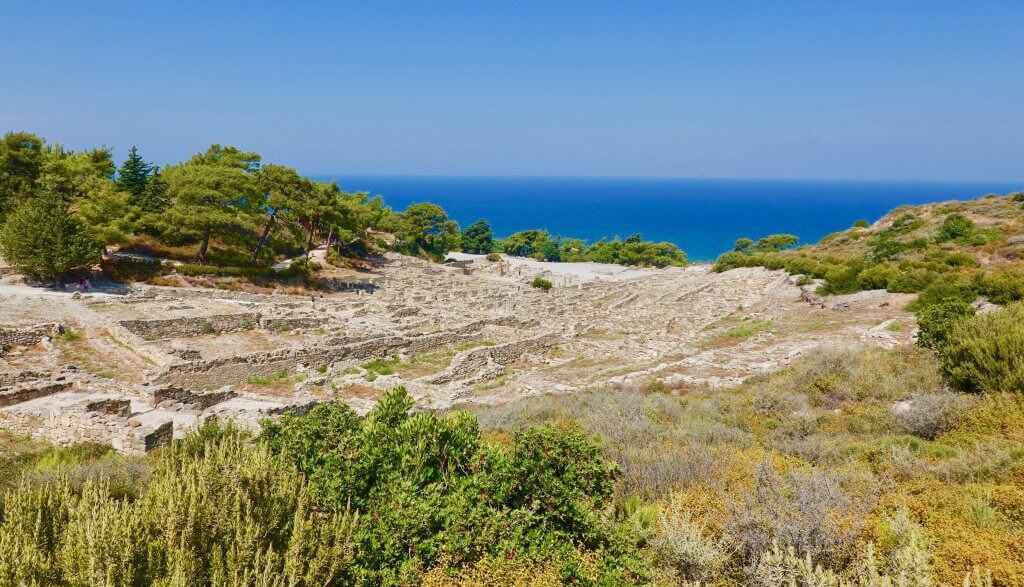
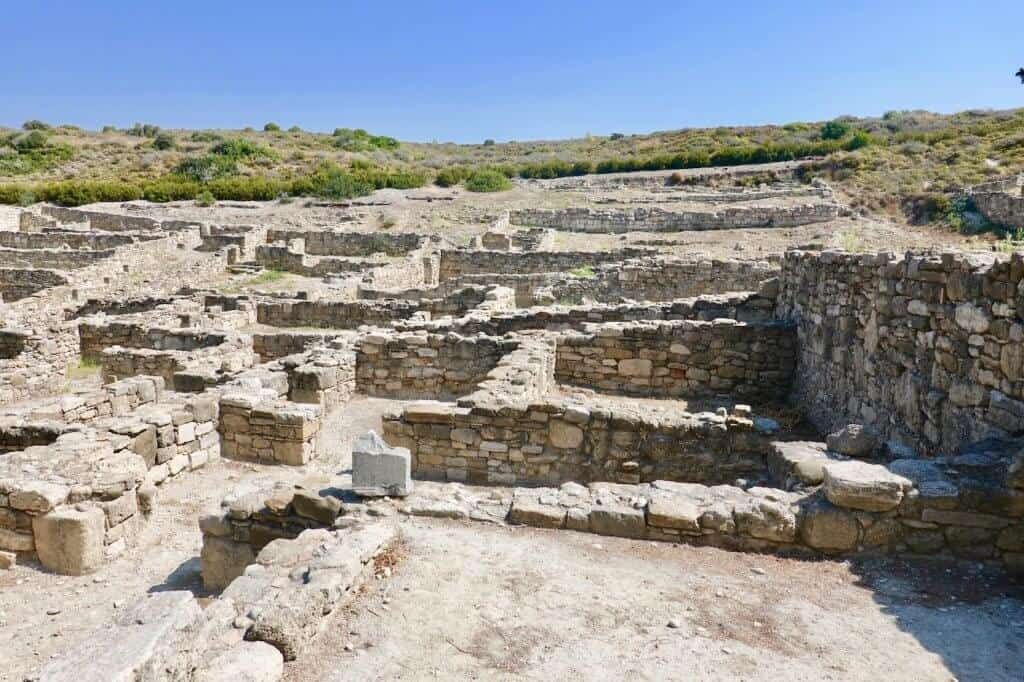
Kritinia (West Coast)
A bit further south on the west coast of Rhodes is Kritinia. This castle is mostly a shell now, but it offers amazing views of the sea. It was a fortress built by the Knights of St. John in the late 15th century. If you’re driving on the west coast, this is worth a visit for the impressive structure and the magnificent vistas in every direction.
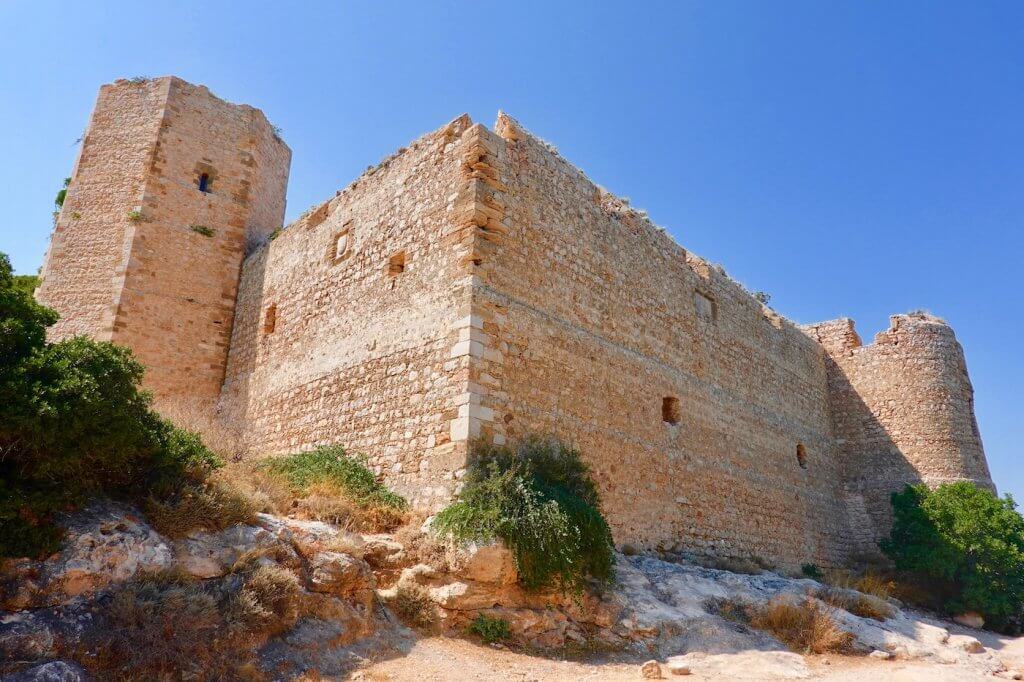
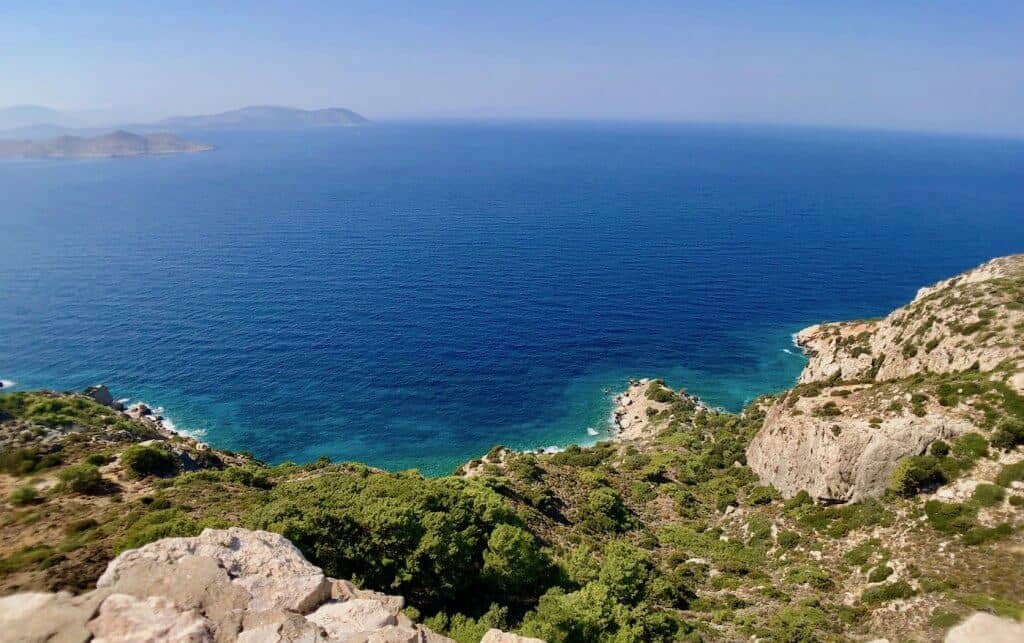
Fountoukli – St. Nicholas (Central Rhodes)
This was a quick detour on our ride through the mountains. It’s a chapel that was built by a husband and wife to honor and memorialize their three children who died in a 15th-century plague. It’s small with colorful frescoes on the walls. You won’t need more than a few minutes to enjoy the peace of the chapel and contemplate what the people endured during the Black Death six centuries ago.
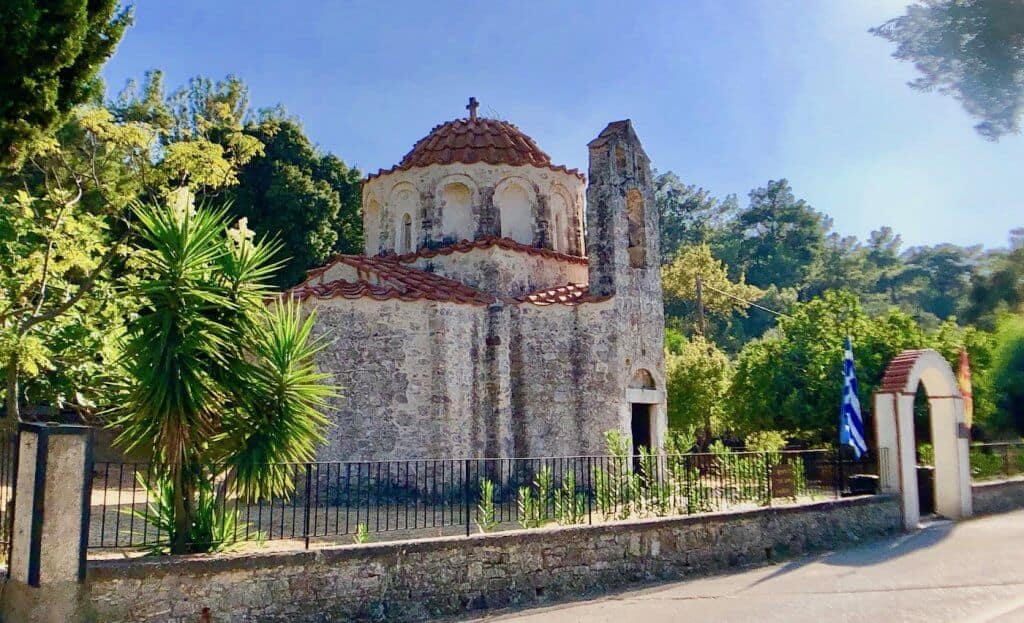
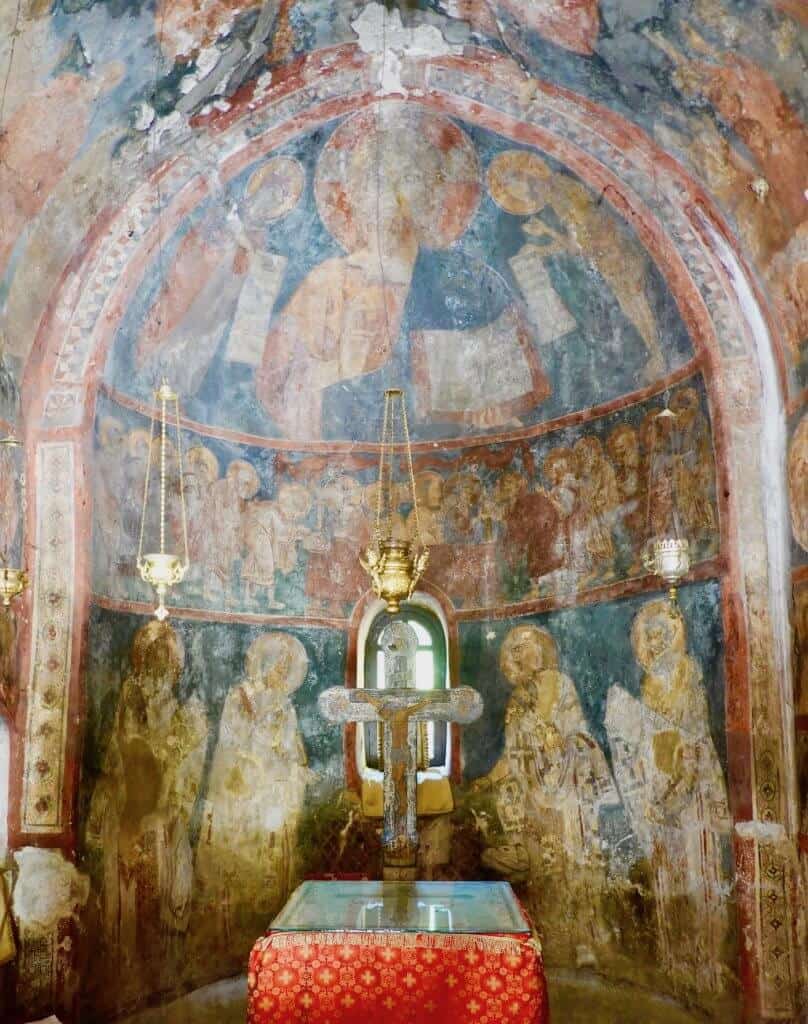
Acropolis, Lindos (Southeast Coast)
What a place! This is a setting for many Instagram images and rightly so. Dating from 3,000 BC, the city was a naval power. The Lindos acropolis is perched high above the town of Lindos and was the site of the ancient temple of Goddess Athena, one of the holiest sites in the ancient world. The Knights of St. John fortified the fortress (acropolis) in the 13th century.
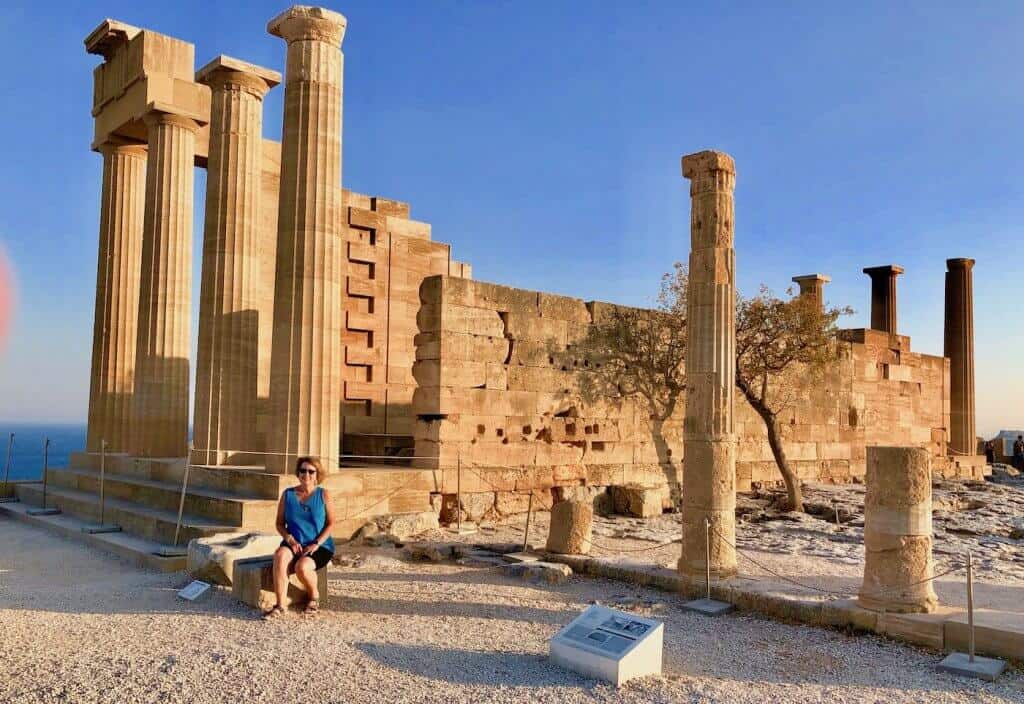
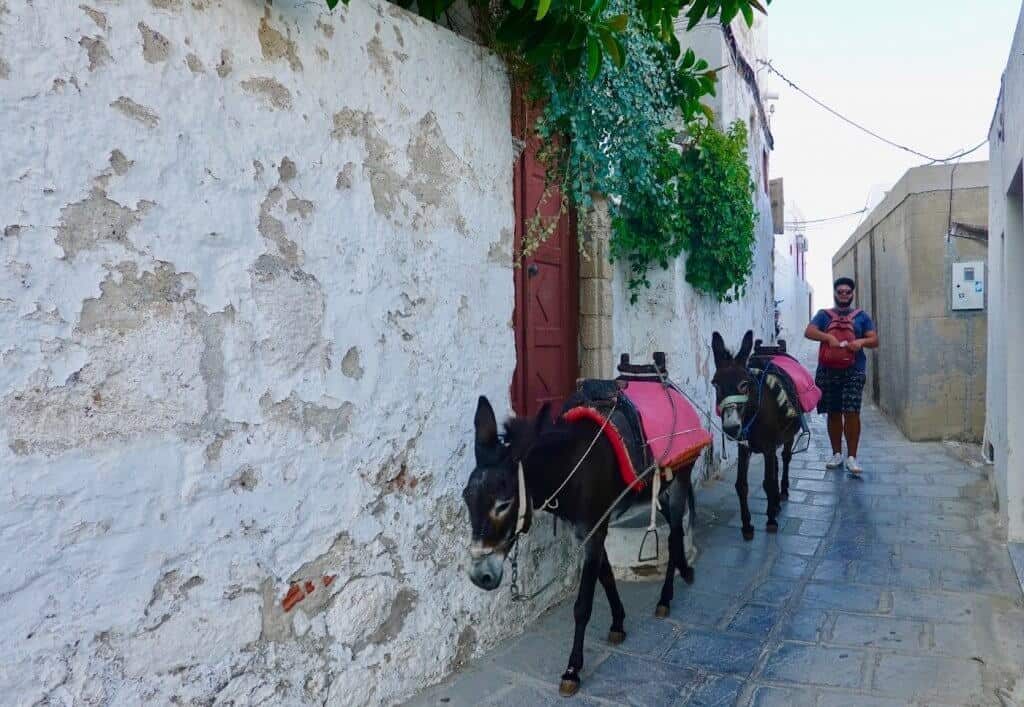
If driving from Rhodes Town (or anywhere else), park in one of the parking lots (fee charged) in St. Paul’s Bay and walk through the town (and past endless gift and souvenir shops). You will walk up an incline with quite a few steps to get to the ticket window for the Acropolis. Then you’re on your way! The path up is by way of an uneven and rocky path. You will be treated to amazing views of the ruins and the sea once you’ve fully ascended. Visiting in the late afternoon is preferable to midday; it’ll be cooler and most of the tourists will have departed. We arrived close to 6:00 pm, and there were few tourists making it easy to walk around and enjoy the ruins and views.
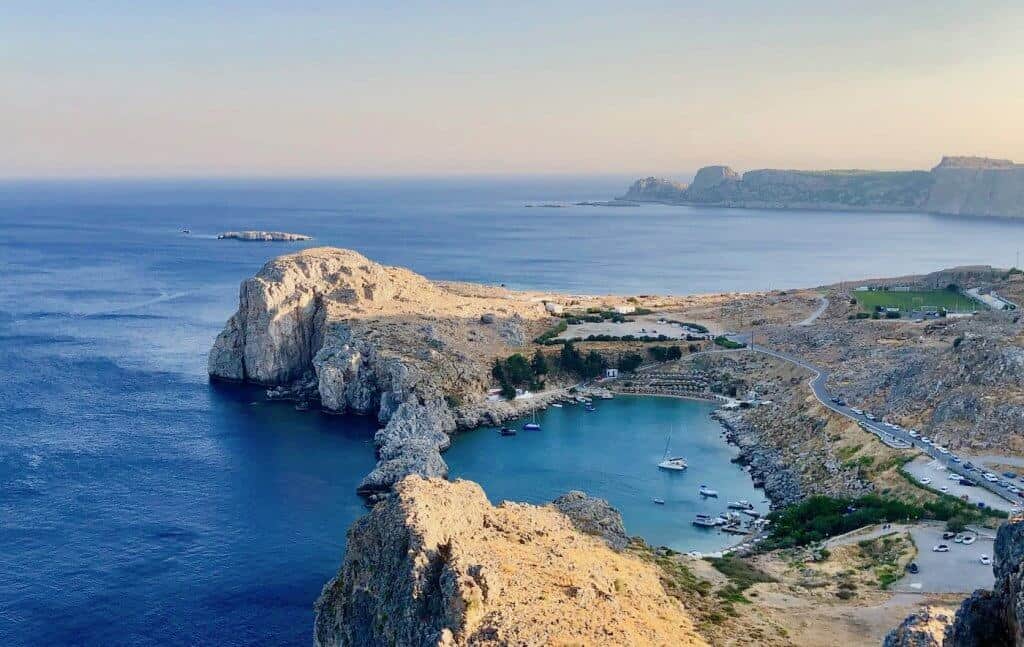
Fun Fact: The steps going up to the Temple of Athena were deliberately designed to be symbolic of rising to a holy place. In fact, a tour guide told us that the steps were the inspiration for the song, “Stairway to Heaven,” by Led Zeppelin who had visited the island.
Where to Stay & Eat in Rhodes
My husband, Pop, and I were delighted at our choice of Kokkini Porta Rossa just inside the medieval walls of the Old Town. Nikos and Angala, his wife, are gracious hosts who have thought of every comfort and amenity for their guests. Actually, you begin your stay as guests, and you leave feeling like good friends of your two hosts.
Formerly a knight’s residence, this boutique hotel has six spacious suites packed with amenities. It’s a perfect mix of old-world charm (with its furnishings and the artifacts on display) with every modern convenience — including a menu of six pillow options.
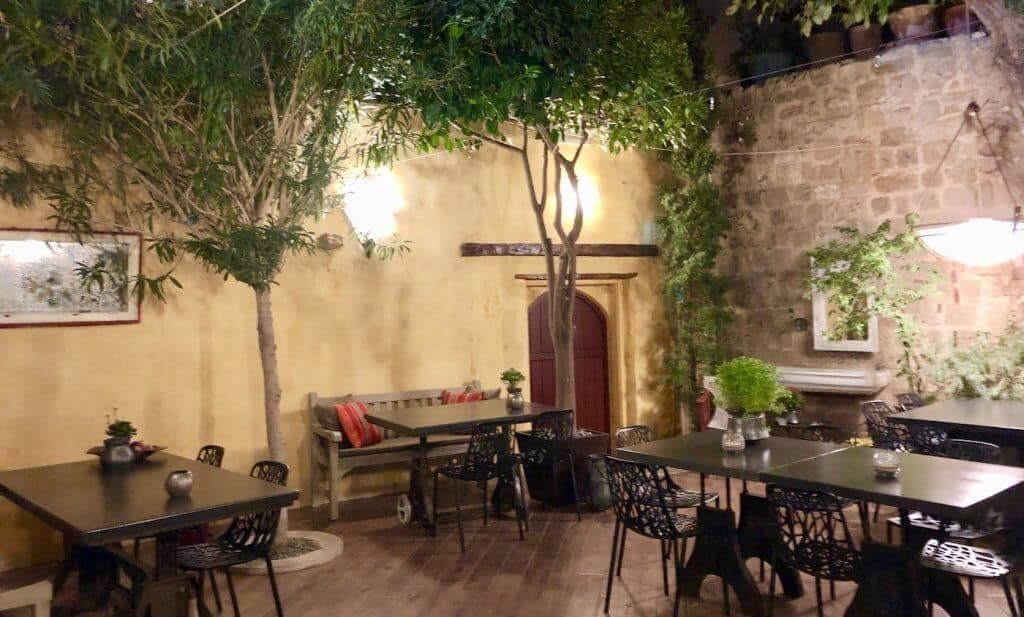
Each morning, you’ll feast on a multi-course breakfast prepared by Angala. Nikos will suggest itinerary options for each day of your stay; his suggestions come with a tablet for you that outlines specific recommendations — along with GPS directions — for the day. When you return from your day’s outings, you’ll be greeted by Nikos, Angala, or maybe Stella and offered a drink while you relax before dinner. We have a strong urge to return to the island and the oasis called Kokkini Porta Rossa. We can’t recommend this hotel highly enough.
Traditional Greek Food in the Mountains
Speaking of Nikos’ suggestions, he pointed us to Paraga restaurant for a late lunch on our travels around the island, and we are so glad he did. Perched in the village of Apollona on the mountainside, the restaurant offers traditional Greek and Mediterranean food cooked in wood ovens. We had bread, grilled vegetables, and pork cooked in ouzo with tomato sauce and finished with a bit of feta cheese. Some local wine was recommended and consumed. This meal is one that we remember fondly for the food itself and the warm hospitality offered by the owner chef and staff.
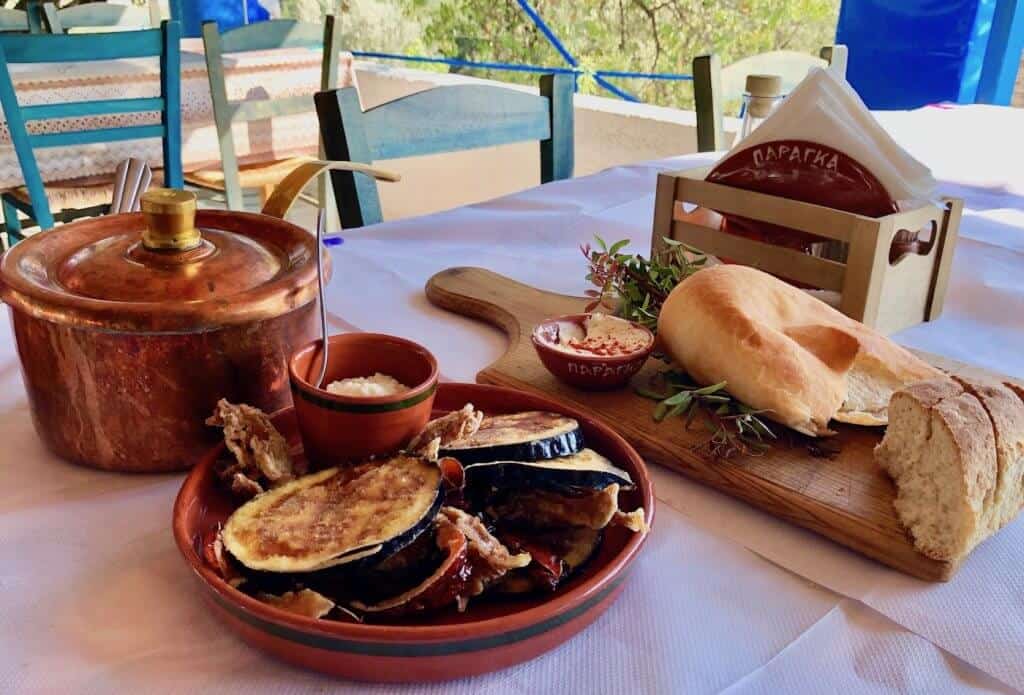
Map of Greece
This map includes all the spots on our two-week trip to Greece. Check out all the places mentioned in this blog post for specific recommendations for Rhodes. Also, read about what to visit in Athens, Crete, and Santorini in other blog posts listed below (under Final Thoughts).
Final Thoughts
When planning this trip to Greece, we knew we wanted to see Athens, Crete, and Santorini. Pop suggested adding Rhodes to our itinerary because of its rich history of many and varying conquerors. I’m so glad we did! This island is easy to access with its airport and ports. (Our flight from Crete was just one hour.) From Rhodes, you can take ferries to the scenic island of Symi (not reachable by plane) and other nearby islands.
We’d also recommend renting a car so you can explore the island on your own, stopping wherever you want to relax on the beach, take pictures of the gorgeous scenery, or just poke around the different villages. We were pleasantly surprised at the roads. When we were thinking of driving in the mountains, I was a bit hesitant. However, we soon discovered that all the roads we traveled are easy to navigate and are well-maintained.
This was one of our stops on our visit to Greece. For more information on planning a trip to Greece and where to visit, check out these other posts:
- A Guide for Two Weeks in Greece
- Driving Tips for Greece
- Top 6 Things to Do in Santorini
- A Visitor’s Guide to Crete
We are pretty sure you won’t be disappointed when visiting Rhodes. It’s got something for everyone and the people are so welcoming.
To make sure you remember all the great experiences on your next trip — be it to Rhodes or somewhere else — take lots of pictures and create a photo book of your journey when you return home. You’ll be glad you did!
Comments?
If you’ve visited Rhodes and have suggestions for other travelers about this beautiful island, go ahead and let us know your thoughts. What spots were your favorite? Why? Inquiring readers want to know! Thanks! 🙂

